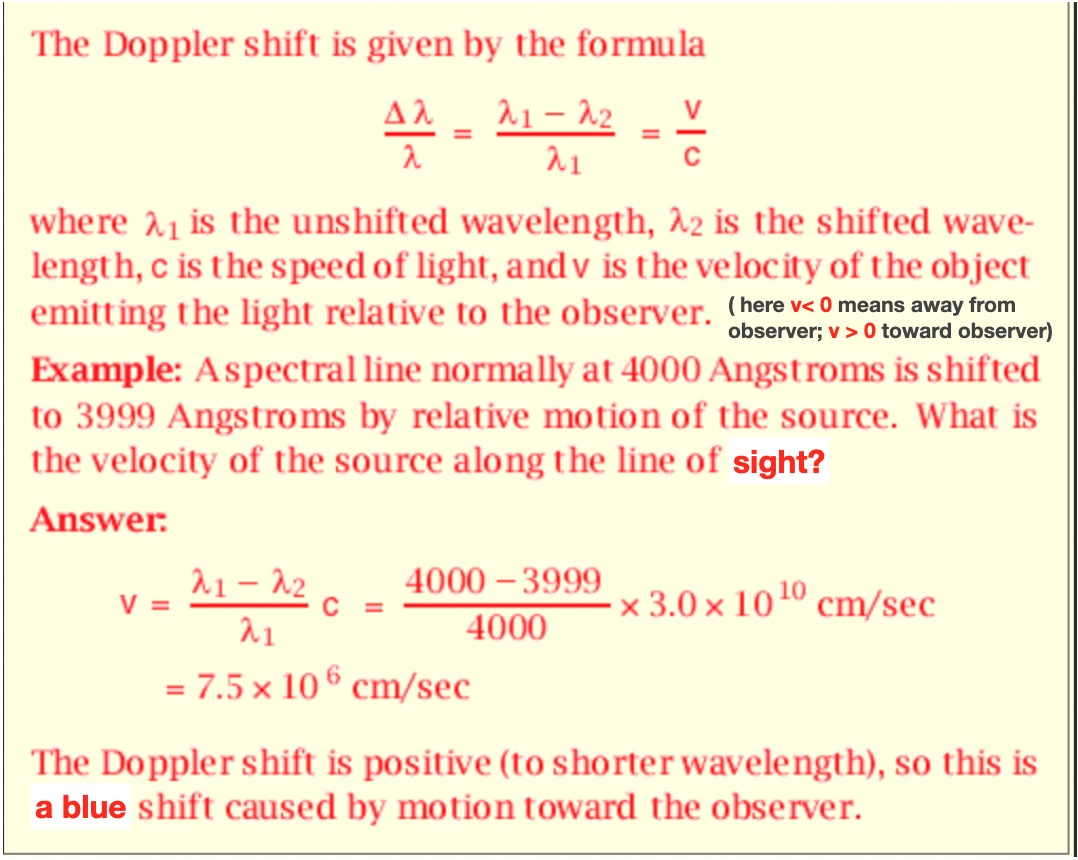 |
| The Doppler Effect |
Most everyone is familiar with the drop in pitch of a train whistle as a train passes your position and switches from moving toward you to moving away from you. This phenomenon is called the DOPPLER EFFECT , and is associated with the wave nature of sound: the relative motion of the source causes the wavelength of the sound waves to be decreased ahead of the source and stretched out behind the source (musically, the pitch of a note is correlated with the wavelength of the corresponding sound wave; thus, the longer the wavelength, the lower the pitch). Here is a Java Virtual Experiment that illustrates the Doppler effect.
Light also can be described as a wave, and relative motion of the source of light waves leads to a corresponding Doppler effect for light. In this case it is not the pitch but the color (that is, the wavelength) that is shifted by the motion of the source. The wavelength is shifted to larger values if the motion of the source is away from the observer and to smaller values if the motion is toward the observer. The shift to larger wavelengths by motion away from the observer is called a red shift by astronomers and a shift to shorter wavelengths caused by motion toward the observer is called a blue shift. The terminology is borrowed from the visible part of the spectrum where blue is toward the short wavelength end and red is toward the long wavelength end, but the Doppler effect occurs for all wavelengths of light, not just the visible spectrum.
 |